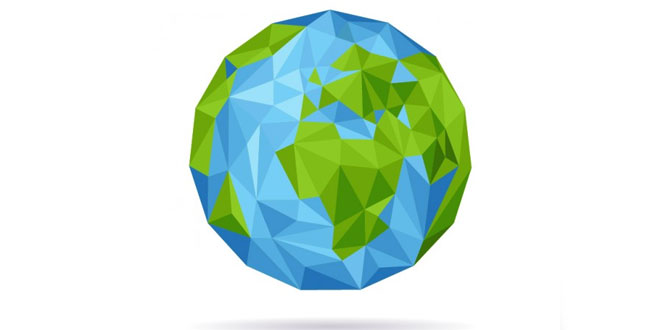Question: What are glaciers? Describe an erosional and depositional features caused by glaciers.
Answer: Glaciers are slow moving rivers of ice. They consist of huge masses of ice blocks spread over several kilometers. Glaciers move at such a slow pace that their movements are hardly noticeable. They are of two kinds- mountain glaciers and continental glaciers.The glaciers too form features of both erosion and deposition. The two major landforms formed by the glaciers are cirques and moraines.
Cirques: A cirques is an arm chair like depression caused by the erosive action of a glacier. When ice accumulates in hollows high up on mountain slopes, the alternate freezing and thawing of the glacier ice causes the rock below to expand and contract till it finally breaks down. In this manner, the ice deepens the hollow, now the weathered rock debris also acts as an agent of erosion. Cirques can be as big as a square kilometer in area. When the ice melts, the cirque becomes a lake called tarn.
Moraines: Glaciers transport eroded rock debris with them as they move, and deposit them on the floor of valleys and the slopes of mountains. Such deposits looks like a sand wall on a snow-covered mountainous tract. Such formations are called moraines.
Question: Explain Wegener’s Theory of Continental drift?
Answer: In 1912, Alfred Wegener-a German meteorologist, made an attempt to explain the present day distribution of continents and oceans. He proposed that millions of years ago, all landmasses were joined together into a super continent, called Pangaea. He suggested that the Pangaea broke and there was a horizontal displacement of the continents. This is called Wegener’s Theory of Continental Drift.
Question: Name the major earthquake belts of the earth. Where are they located?
Answer: No part of the earth is free from earthquakes. But in some areas, earthquakes occur more frequently. The main earthquake belts on the earth are as under:
- Circum-Pacific belt: The Circum-Pacific belt includes the coastal margins of North America, South America and East Asia. These regions account for about 65% of the total earthquakes of the world. This belt coincides with the Pacific Ring of Fire.
- Mid-Continental belt: The Mid Continental belt includes the Alpine mountains, Mediterranean Sea, northern and eastern Africa and the Himalayas. About 25% of the seismic events are recorded here.
- Mid-Atlantic Ridge belt: The Mid Atlantic Ridge belt includes the Mid-Atlantic Ridge and the adjoining islands. It records moderate earthquakes which is caused due to the moving of the lithospheric plates in the opposite directions.
- The earthquake belt in India is mainly confined to the Himalayan region and the Ganga-Brahmaputra valley. About two-thirds of India is earthquake prone.
 Class Notes NCERT Solutions for CBSE Students
Class Notes NCERT Solutions for CBSE Students




it is quite a concept which you do a not understand.